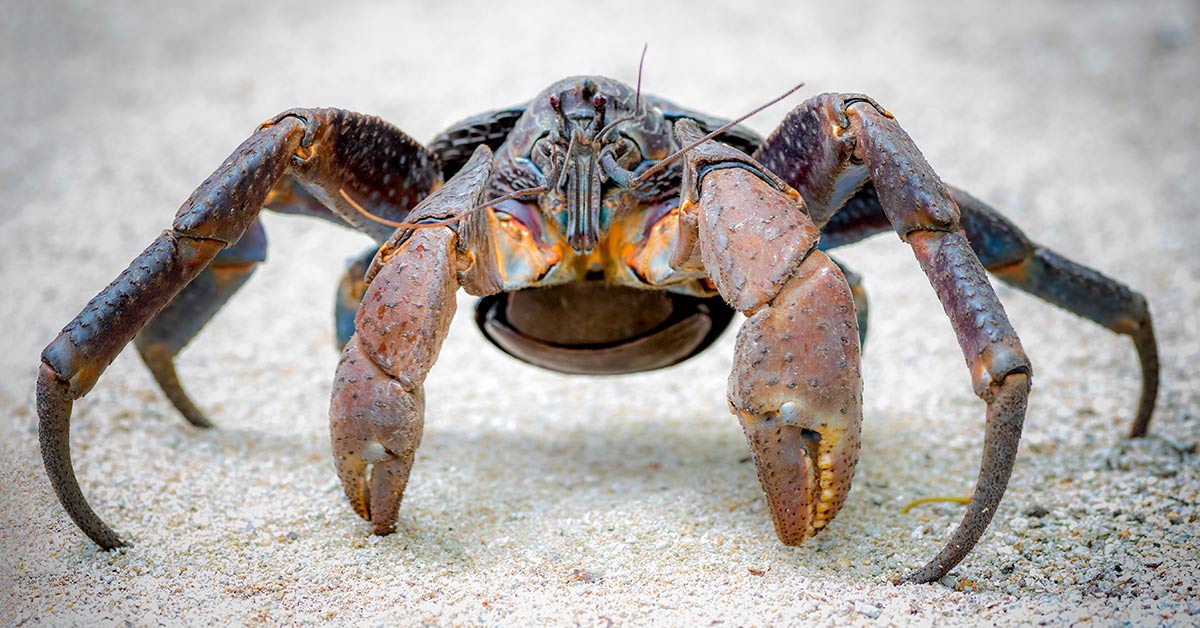What may seem like a nightmare to many of us apparently is not all that out-of-the-norm or scary to Australians. In 2020, a family was enjoying an evening picnic on Christmas Island, Australia, when dozens of giant coconut crabs showed up at the party. These photos will leave you in shock – and maybe not never want to visit Christmas Island!
When Coconut Crabs Take Over
Along with her family and friends, Amy Luetich was enjoying a camping trip on Christmas Island, just off the coast of Australia in the Indian Ocean. They were having a late-night picnic party when some unexpected guests decided to crash the festivities. These guests, however, were not human guests. They were giant crabs – coconut crabs, to be exact. (1)
Part-way through their barbecue, a massive herd of the giant coconut crabs came rolling up. Often described as gentle giants, they did not come to harm anyone. They simply came because the food smelled good and they wanted their share. As it turns out, coconut crabs have another more colloquial name: Robber Crabs. They will take and devour anything edible that they can get their hands – or rather, claws – on.
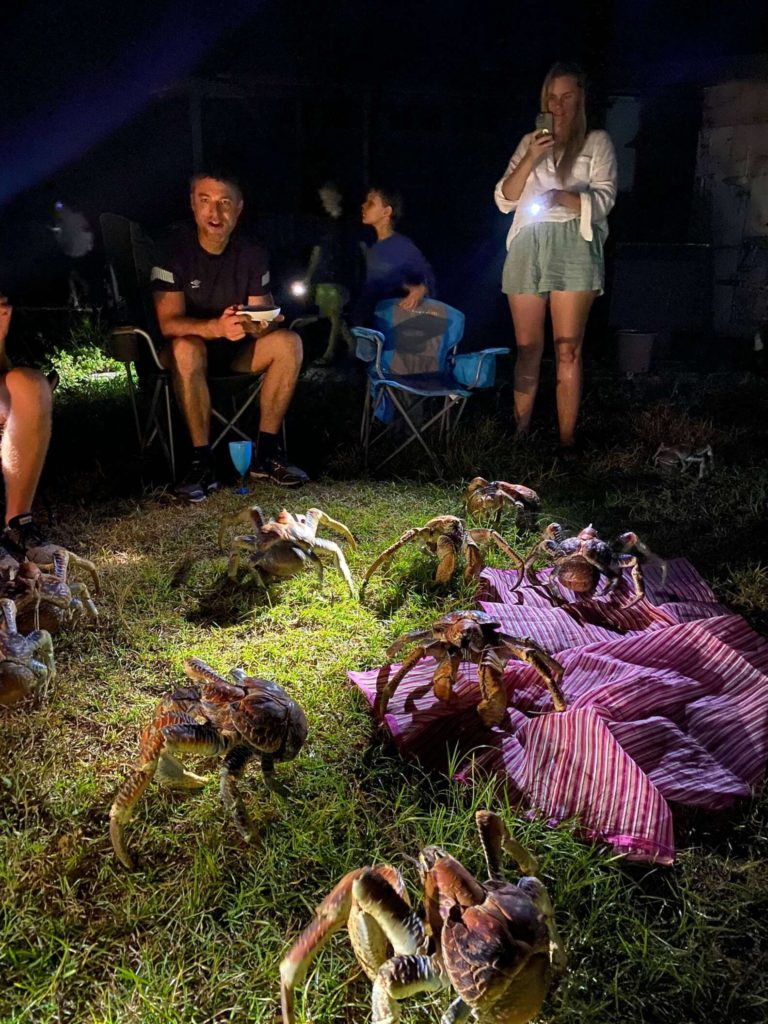
Thieves in the Night
Luetich explained to The Dodo that she had seen the pod of crabs earlier in the day happily keeping their distance from her and her family and friends. When nighttime rolled around and they started cooking, however, the coconut crabs shed their trepidation and stormed over to their campsite.
“We lit our camp fire, and when we started cooking, the smell of the food attracted a whole huge number of robber crabs,” Luetich explained. “We were sitting down trying to eat our dinner and they were everywhere!”
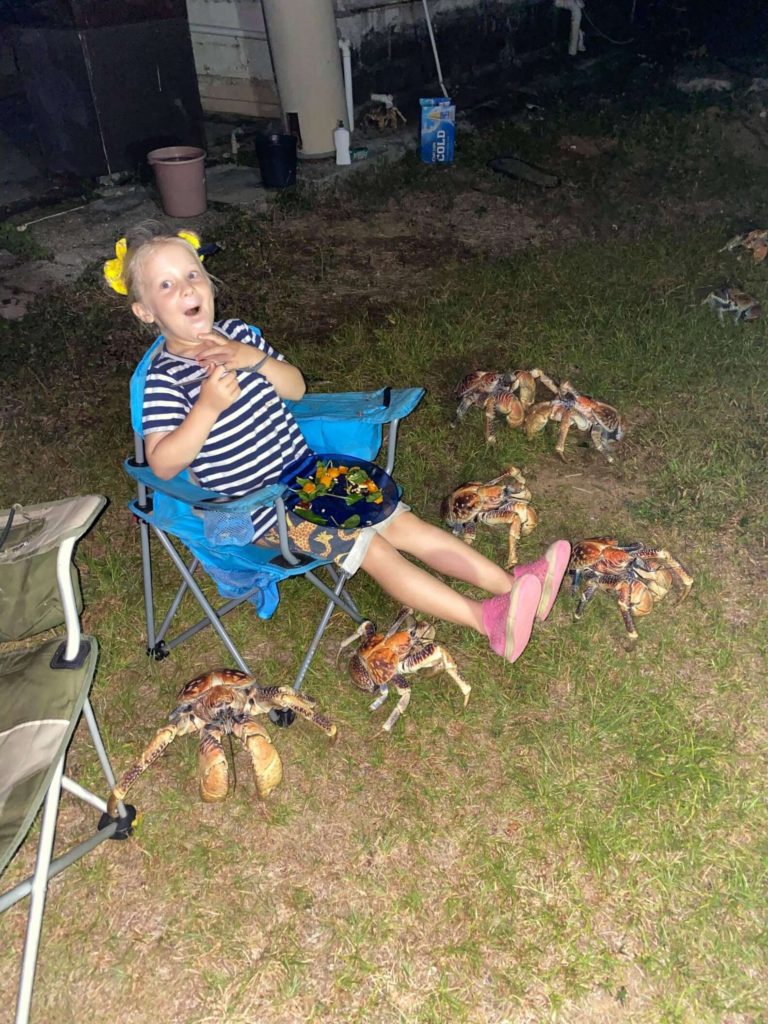
Her son counted 52 crabs altogether. Thankfully, the crabs were not quite fast enough to actually get any of the food. They were, however, tapping on the people’s legs and climbing up onto the tables. Rather than terrifying, the family found the experience quite cool. You can see in the photos that no one really seems to be bothered by them at all.
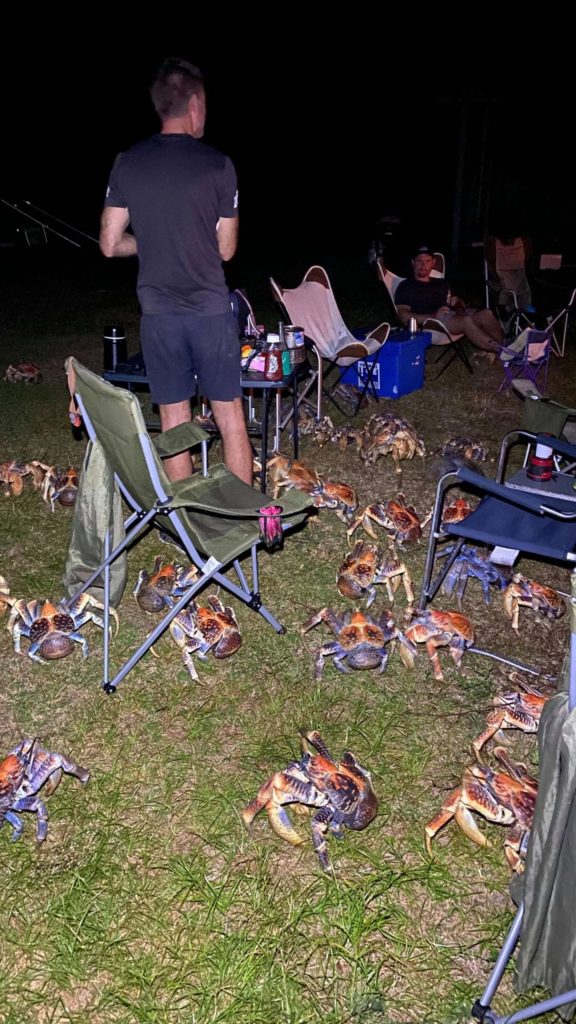
“They are protected and respected here on the island,” Luetich said. “The big ones can be up to 80 years old, so we would never want to hurt one of these gentle giants.”
She says they tried to move the curious creatures back towards the forest, but the coconut crabs were far too interested in the food to be deterred. It wasn’t until the food was packed up and gone that the crabs finally took their cue and left.
Related: The Coconut Crab Kills Birds And Breaks Bones – And May Have Eaten Amelia Earhart Alive
More On Coconut Crabs
Coconut crabs may be “gentle giants”, however, don’t be fooled – these are no slouches. First of all, their leg span can be up to a meter long. Their grip strength is incredible and they can lift objects that weigh the same as an average 10-year-old child.
They are not the largest crabs in the world, but they are the largest that spend their entire adult life on land. They typically live up to 60 years and reach sexual maturity at age five. They mate between May and September each year. When the female crabs are ready, they release their eggs into the water. (2)
Their name comes from the way in which they are born. When the eggs hatch, the larvae attach themselves to floating coconuts. They may also attach to floating logs or rafts. The larvae stay there for four to six weeks. From there, they turn into little shrimp-like creatures and head to the seafloor, where they find suitable shells for refuge. They slowly migrate towards the shore until they are juvenile crabs. Once they become adult crabs, they drop the protective shell as their exoskeleton is sufficient enough. Now no longer able to swim, they never enter the water again.
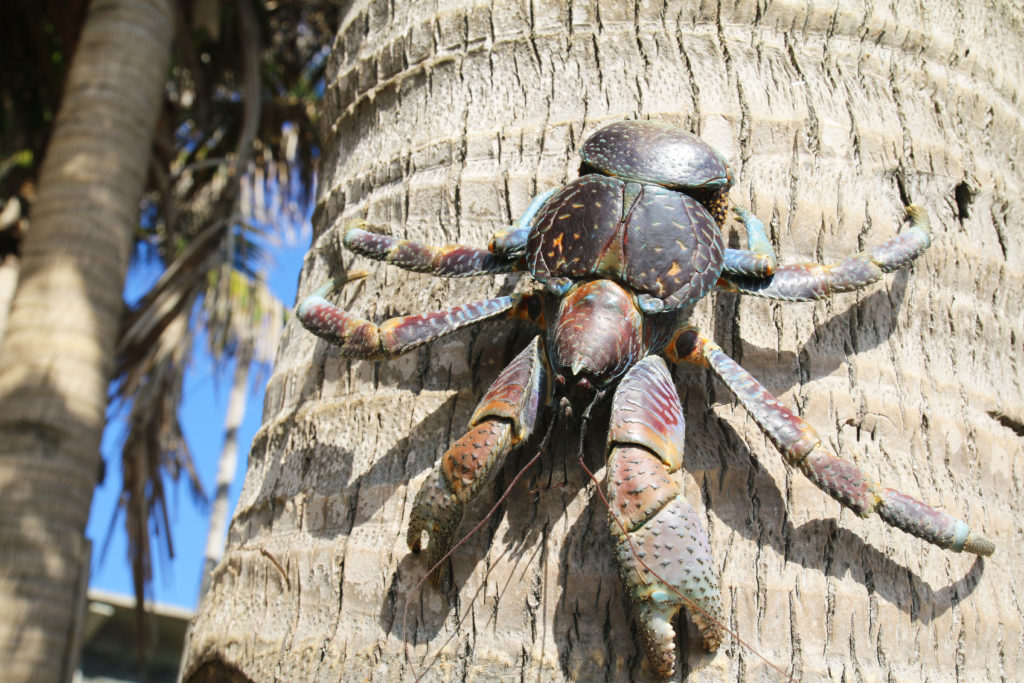
Their Diet
Their diet is the primary reason for their name. Coconut crabs crack open coconuts and eat the white part inside. Their long legs, curved claws, and incredible grip strength make scaling palm trees and busting open hard coconut shells a walk in the park. They will also eat fallen fruits, nuts and seeds.
Don’t be mistaken, however, these crabs are not vegetarians. These are predators who regularly go after rats, large migratory seabirds, and even others of their own species. Some believe that coconut crabs are to blame for why Amelia Ehrhardt’s body was never found after she crashed and perished in the ocean, however, that theory has never been proven.
A Protected Species
Coconut crabs don’t have any real predators of their own thanks to their more isolated habitats. Still, they are listed as a vulnerable and therefore protected species. Their biggest threat is, of course, us.
“They’re such a large crab, so obviously they’ve got lots of crab meat in them. It’s really difficult to tell islanders that you should protect the species when it’s their food source,” says Miranda Lowe, Principal Curator of Crustacea at the Natural History Museum in the UK. “Communities rely on them for food, but also to sell. It can have a major impact on the species.”
Overharvesting and habitat loss have been the main driving factors in their population depletion. They are now a protected species with regulations surrounding their harvesting. Females carrying eggs on their undersides are not to be harvested at all. Each island nation that is home to coconut crabs has its own legislation. If you ever have an encounter with one, don’t be scared and certainly don’t harm them. They need our protection so they will not join the long list of already extinct species.
Keep Reading: Researchers Capture Rare Footage of Fish That Sees Through its Own Head
Sources
- “Crowd Of Giant Crabs Decides To Crash Family’s Picnic.” The Dodo. Stephen Messenger. September 25, 2020.
- “Coconut crabs: the bird-eating behemoths thriving on isolated tropical islands.” NHM. Emily Osterloff.
